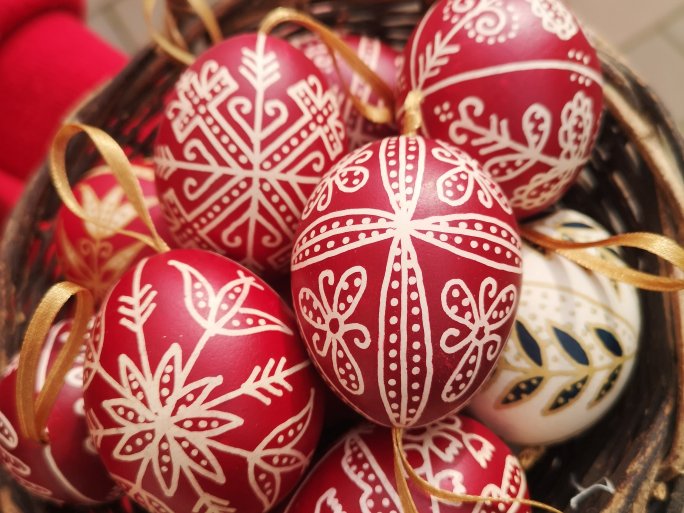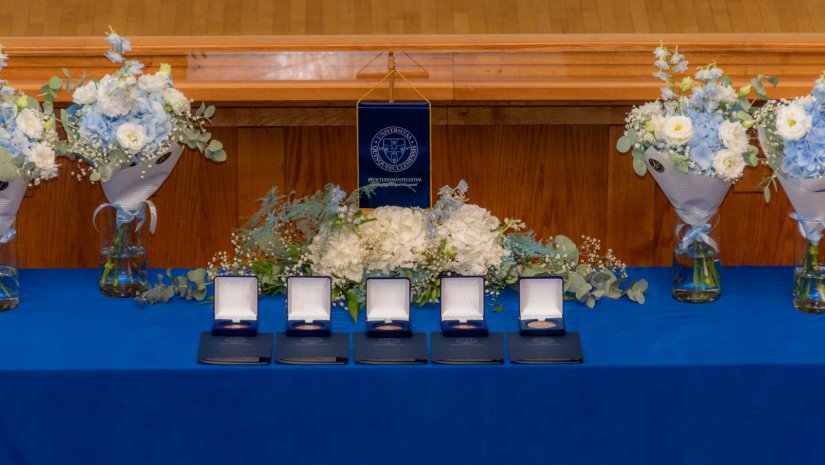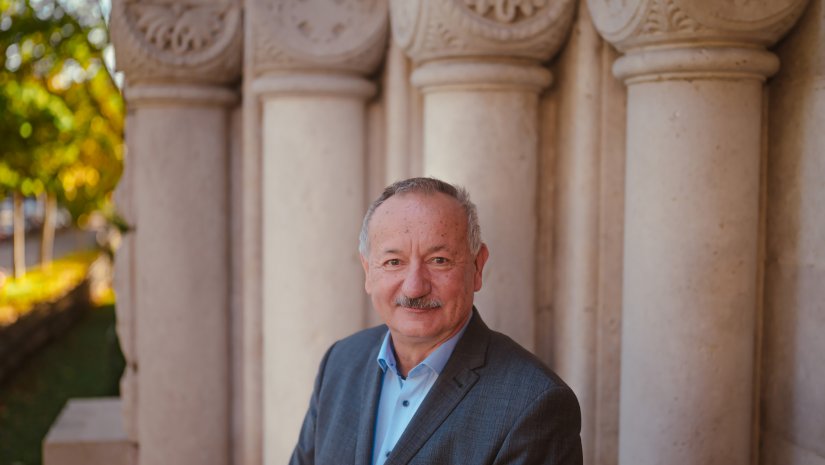The National Easter Egg contest has been announced for the first time this year, the Mail Art Egg Project however, is organized for the tenth time already. Both projects are focusing on Easter eggs, both have been the idea of the egg craftsman Éva Mosonyi, an alumna of the UP Faculty of Business and Economics.
Written by: Éva Harka

Why and when did you start decorating Easter eggs?
I inherited the tradition of decorating Easter eggs in the family. My grandmother came from Kékesd, a small village in Baranya county, where egg painting was a usual pre-Easter activity. When I was in kindergarten, I stood by her side and started ‘writing eggs’ (using the traditional wax-resist egg dyeing technique), which is the literal translation of the name of this tradition. I did not know until I was a teenager that it was an ethnographic treasure, and not known to everyone.
We decorated Easter eggs for family, friends, neighbours... Later, I started teaching how to ‘write’ eggs (tojásírás), first for children, then for parents, and then I joined the Hive Association, and I discovered the ethnographic, scientific side of this unique tradition. Egg dyeing is a part of my life today.
How widespread is the tradition of decorating eggs for Easter in the world?
The motifs have meanings, and these are characteristic only for the Carpathian Basin, especially in the Transylvanian and sporadic areas. Here they put patterns on the eggs that have not only an aesthetic function, but also meaning. We could talk at length about the pattern of eggs, what motifs and symbols a godmother would use, or what patterns a recently married woman would put on an egg that she intends to give her husband, or what symbols were used on eggs made for the watering lads. All these have tremendous ethnographic value.

In the description of the contest, you mentioned that this is one of the last Hungarian folk traditions still kept alive. What is the reason in your opinion?
The disadvantage of the decorated Easter eggs turned out to be an advantage in this sense: usually hard-boiled eggs are decorated, which are eventually eaten. Therefore, every Easter, people had to paint new ones. This annual repetition has kept the tradition alive year after year.
In the meantime however, we have discovered that it is possible to dye eggs that have been blown out, and it is even more practical, since you can make them any time of the year, even a long time before the holiday, and if it is especially nice, we will put it in away and take it out on Good Friday. I think that threatens the survival of tradition. We should do today, as it used to be: just decorate hard-boiled eggs and eat them afterwards, so that there is a creative compulsion to continue next year. By the way, if you take a 30-50 gram hen's egg into your hands and feel its weight, it is easier to hold, it allows a firm grip for decoration.
Read more about the Mail Art Egg Project 2021 & send your own mail art:
https://evamosonyi.wordpress.com/mail-art/mail-art-2021/projekt-leiras-project-description/
Learn more about Hungarian Easter egg decoration techniques and motifs:






